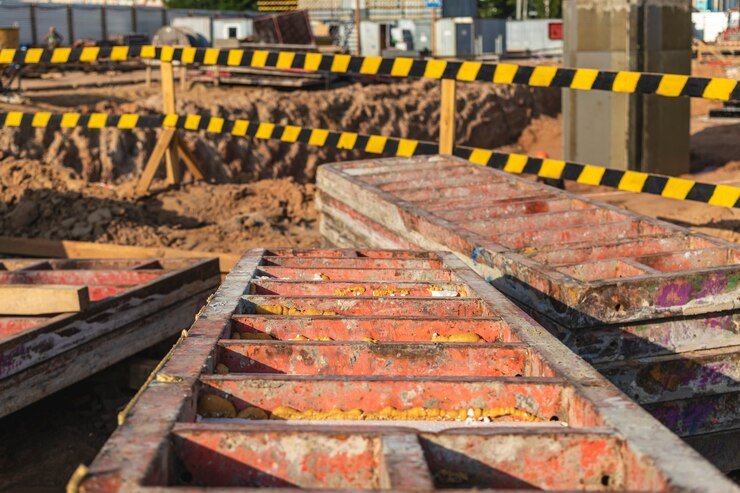Excavation activities play a crucial role across diverse industries, particularly in construction and infrastructure development. Despite their significance, these activities have essential harbour risks, commonly referred to as excavation hazards. Prioritising the safety of workers is paramount, necessitating a profound comprehension of these hazards and the implementation of robust control measures. This blog talks about the multifaceted landscape of excavation hazards and control measures, emphasising the critical need for dynamic risk reduction. By navigating through the varied challenges caused by excavation activities, our aim is to equip readers with comprehensive insights into the potential dangers involved. The following sections will expound on the complexities of different hazards while explaining the most effective control measures essential for providing a secure working environment.
Common Excavation Hazards and Control Measures
Excavation Hazards List: Excavation hazards cause various threats to workers engaged in digging, trenching, or related activities. Carefulness is crucial for accident prevention. An all-inclusive excavation hazards list includes potential dangers that demand attention to ensure a safe working environment. Awareness of these risks is most important to implementing effective safety measures and protocols.
Cave–ins: The collapse of excavation walls causes one of the most critical hazards, leading to workers being buried under soil or debris in cave-ins.
Falls: Workers can be at risk of falling into excavations, especially in cases where protective barriers or guardrails are not properly installed.
Falling Loads: As excavators lift and move materials, there is a risk of loads falling into the excavation site, endangering workers below.
Hazardous Atmospheres: Encountering toxic gases or substances underground cause a significant threat to workers’ health and safety.
Engulfment: Materials such as water or soil can unexpectedly fill an excavation, causing out flow and trapping workers.
Understanding these excavation hazards is crucial for creating a safe working environment. By identifying potential risks, employers can develop targeted control measures to reduce these dangers.
Effective Control Measures for Excavation Hazards
Excavation Control Measures: Ensuring a secure working environment during excavation activities is dependent upon the implementation of effective excavation control measures. Key to accident prevention, these measures address various excavation hazards.
The following list outlines essential control measures that play a critical role in safeguarding workers and maintaining a safe workplace during excavation tasks.
Trench Protective Systems: Trench protective systems, such as shoring, sloping, and shielding, are vital in preventing cave-ins. Engineers and supervisors should assess the soil type and choose the most appropriate protective system for each excavation.
Fall Protection Systems: To prevent falls into excavations, using fall protection measures like guardrails, covers, or personal fall arrest systems is crucial. Workers must use safety harnesses and lifelines when working near unprotected edges.
Load Handling Procedures: Proper load handling is essential to prevent the risk of loads falling into excavations. Securely attaching loads to excavators and employing proper rigging techniques can significantly reduce this hazard.
Atmospheric Testing and Ventilation
Regular testing for hazardous atmospheres with an excavator and controls. Enough ventilation systems must be in place to ensure that workers are not exposed to harmful gases or substances.
Entry and Exit Points: Moreover, establishing proper entry and exit points for excavation sites is critical. These should be strategically located to allow easy access and retreat for workers, enabling swift evacuation in case of an emergency.
Open Excavation Safety: Open excavation sites, whether for utility installations or foundation construction, present distinct challenges. Reducing these challenges requires specific control measures to ensure open excavation safety.
Implementing these measures is crucial to creating a secure environment. Safeguarding workers and preventing accidents during activities such as utility installations or foundation construction in open excavation sites.
Visibility Measures: Maintaining clear visibility around open excavation sites is crucial. Fair lighting and signage should be employed, especially during low-light conditions, to prevent accidental falls or collisions.
Barriers and Barricades: Build physical barriers and barricades around open excavation sites helps to keep unauthorised personnel and vehicles at a safe distance. Furthermore, this prevents accidental entry into hazardous areas.
Regular Inspections:
Conducting regular inspections of open excavation sites is essential. Furthermore, This includes checking the stability of excavation walls, ensuring proper sloping or shoring, and addressing any potential hazards promptly.
Conclusion
In conclusion, successfully navigating excavation hazards demands a comprehensive understanding of potential dangers and the implementation of effective excavation hazards and control measures.
A collaborative effort among employers, workers, and site supervisors is essential to establishing a secure environment for excavation activities. The consistent application of the outlined control measures, coupled with sustained care, is instrumental in minimising the risks associated with excavation hazards. This collective commitment ensures the well-being of everyone involved in excavation work, providing a culture of safety that prioritises.
Accident prevention and promotes a secure working environment. Moreover, Through these concerted efforts, the industry can strive towards incident-free excavation practices, safeguarding lives, and upholding the highest standards of occupational safety.
About John Walters Landscaping
For expert excavation services prioritising safety, reach out to John Walters Landscaping today. Renowned for a commitment to excellence and a commitment and focus on implementing the latest excavation control measures.
They stand as a reliable solution for all your landscaping and construction needs. Additionally. Their dedication to safety ensures a secure working environment. Making them the go-to choice for projects requiring meticulous attention to excavation hazards.
Whether it’s for landscaping enhancements or construction endeavours, John Walters Landscaping guarantees top-notch services. Backed by a comprehensive understanding of safety protocols. Trust in their expertise to deliver exceptional results. Coupling proficiency with a steadfast commitment to prioritising the well-being of both workers and clients.
